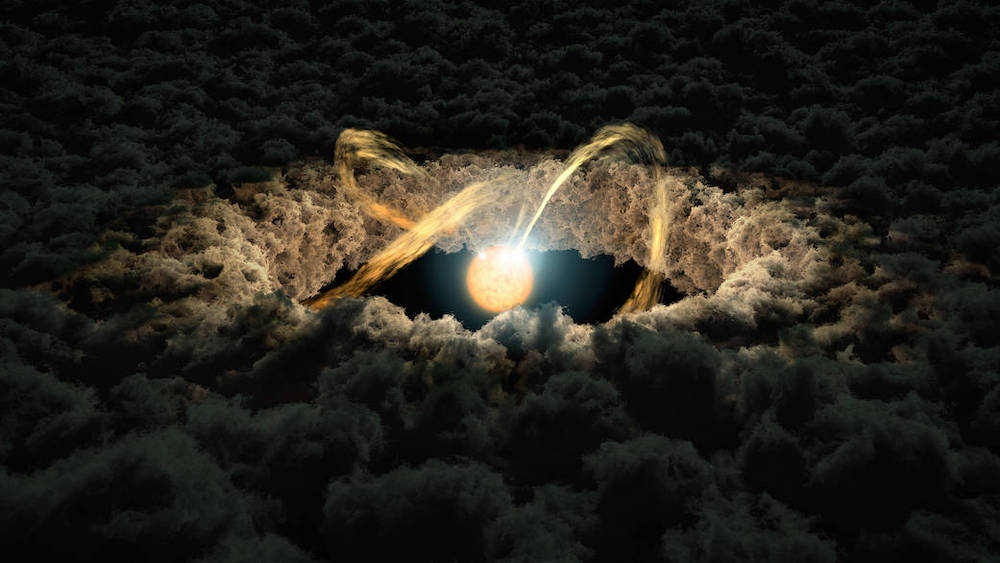Create a free profile to get unlimited access to exclusive videos, sweepstakes, and more!
We could find out how life on Earth spawned from largest molecules ever found around forming planets
If aliens aren't out there now, they might be in the future.

Earthlings who have tried phoning E.T. have always gotten a dead signal. Do you still want to believe? Maybe the aliens aren’t answering because they haven’t come into existence — yet.
Though dimethyl ether has been found in clouds from which stars are born, it had never before been seen in a gaseous disc that spawns planets. This disc (IRS 48) is in the constellation Ophiucus, about 445 light-years away. Protoplantary discs have organic molecules floating around all over, but this is by far the largest ever detected among embryonic planets, and it is a molecule that could lead to even larger molecules that are found in the precursors to life.
It is difficult to make out molecules in protoplanetary discs because they are often shrouded in dust. Dimethyl ether was hiding in ice within a dust trap in IRS 48. When the ice sublimated, or morphed from a solid right into a vapor, the molecules became visible. Researcher Nashanty Brunken of Leiden Observatory, who led a study recently published in Astronomy & Astrophysics, thinks it could reveal more about the origins of life on Earth, and possibly beyond. Formaldehyde was what told her and her team that there was ice in the dust trap.
“Formaldehyde has a formation route in the gas phase as well as in the ice phase, but it can lead to the formation of methanol via ice chemistry,” she told SYFY WIRE. “When methanol was also detected in the disk, we could concluded that the dust trap was actually an ice trap that is rich in molecules.”
How much formaldehyde was there in comparison to methanol revealed that the formaldehyde must have formed mostly through ice chemistry, therefore ice was definitely lurking in that dusty haze. Observations also showed that methyl formate, another large molecule that could be an indicator of life in this nascent system’s distant future, might be in that ice. Both dimethyl ether and methyl formate can only be created in frozen regions like the icy dust trap in IRS 48. Protoplanetary discs are too warm for complex molecules like this to form anywhere else.
To get dimethyl ether to form in space, you need carbon monoxide ice somewhere, but there is none in IRS 48. It instead starts to form in the extreme cold of molecular clouds in their earliest phases. These dark, dense clumps are so dusty that they are impossible to see through, but atoms that stick to the ice that forms on dust grains and react with each other form simple organic molecules, which then go through more chemical reactions that create more complex molecules. How they form and evolve may reveal how life appeared billions of years ago.
“The ice origin of dimethyl ether suggests that these complex organic molecules are present in the earlier cold cloud phase before the formation of stars, which means that all disks should have the material for prebiotic molecules,” said Brunken.
Meaning, while this is not evidence of alien life-forms or their DNA, it may explain how molecules that formed larger molecules that formed even larger molecules came together into amino acids and other compounds necessary for life (at least as we know it). Brunken and her team might be on to something if it can be proven that these substances are around in other planetary systems. That would mean they probably formed in the same way dimethyl ether was thought to have formed in IRS 48, and that every system at least has the potential for life.
“We hope to find more of these large molecules, and search for these molecules in other sources to show that the IRS 48 is not unique and that this prebiotic material is indeed available in all planet-forming regions,” she said.
Maybe aliens are already starting to emerge and we just don’t know it.


























